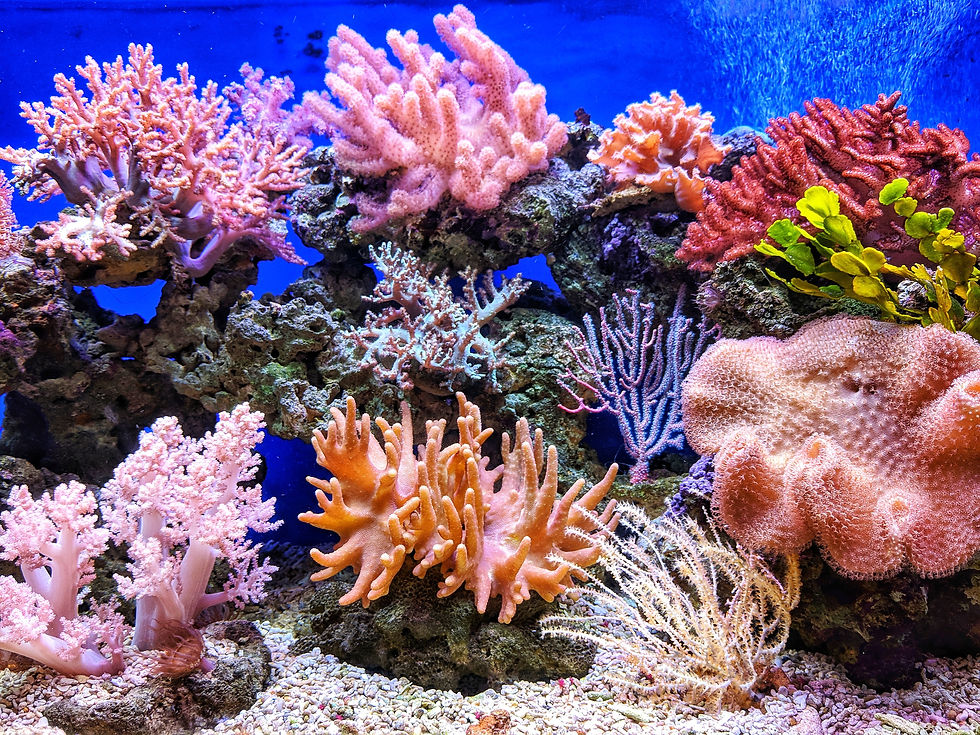Guide to an Ocean-Friendly Wardrobe
- Jeanine Thurnher

- Jun 9, 2021
- 3 min read
Updated: Aug 16, 2021
Our ocean is kind of like the future – we do not know much about it. It covers approximately 70% of the Earth’s surface and despite our best efforts we have only managed to explore around 20% of it. That means 80% of the ocean is yet to be discovered, which is mesmerising to think about.
What we do know, however, is that the fashion industry harbours tons of dirty secrets. Fortunately, more and more of these secrets are being uncovered by the public. One of them is the industry’s ‘relationship’ with our ocean. We depend on it in order to survive, it provides us with indispensable resources, and in return we treat it horribly.
Small steps towards being ocean-friendly
One of the biggest mistakes people make is thinking that if they implement some environmentally friendly, or in this case ocean-friendly habits, in their life is pointless as it will not change anything. But that is simply not true.
Of course, one person buying one non-synthetic T-shirt that was dyed using non-toxic dyes will not prevent microplastics reaching the ocean. It will also not remove the millions of tons of plastic waste that have been floating around in rivers and seas, which later reach the ocean, either. But it is a start.
Here’s some tips and advice on how to make your wardrobe ocean-friendlier.
Where should you start
The very first thing you might want to do is research. Lots and lots of research. Take a deep dive into the websites of the brands you currently shop at or those you are considering purchasing from. Do not just look at the materials of the clothes but also take a look to see if they have any information on their suppliers and manufacturers – where are the raw materials sourced?
And if they say they use recycled materials, then how much of the clothing’s percentage is actually made of that, and what kind of dyes were used to create it?
If you are thinking, well, this sounds like an extremely time-consuming activity, that is because it is. But you might be amazed how much you can learn about a brand and their products. Or in some cases, how little information you can find.
Be very careful with brands that are too secretive and barely tell you anything about the clothes they offer. Usually, that is not a good sign.
The evil synthetics
Try to avoid polyester and other synthetics. Synthetic textiles shed microplastics that cannot be extracted from the ocean. It is a danger to both the ecosystems living in the seas and eventually to us humans, too. Look for either non-synthetic or bio-based alternatives.
Sadly, most of these are quite expensive, and therefore are not accessible to a lot of people. But if you have the budget, it is definitely worth investing in them. An amazing example is PANGAIA’s ‘Ocean Collection’ which is made out of 100% certified organic cotton and non-toxic dyes.
To wash or not to wash
Another important step towards creating an ocean-friendly wardrobe is knowing how to wash them. The simplest solution? Don’t. Or at least not that often. If your clothes are not really dirty, they just do not smell or feel so fresh anymore you could just hang them outside and let them air out for a while.
However, if you do wash your clothes, try to use cold cycles, eco-friendly detergents, like Dropps or Ecover and use a microfibre washing bag or ball, for example, ‘Guppyfriend’. Around 700 000 microplastics escape your synthetic clothing at each cycle, most of which later reach our ocean. So, it is crucial to catch them as early as possible – in the washing machine – because once it reaches the ocean it is marine life that will ‘collect’ them.
Stop buying
Lastly, the best way to reduce your impact on our ocean and our environment is buying less clothing. Especially fast fashion items. Try to also avoid synthetic clothes where you can and look for more sustainable alternatives. Buying local is also an amazing option as that way your clothes don’t travel thousands of miles in shipping containers.
Shift towards ocean-friendly
Changing our habits is not an easy task. So, if you really want to be ocean-friendly you will need to work for it. Buying 12 items for £20 in two clicks might seem a lot more comfortable but it feels so much better buying something that has positive impact on the environment. It is ultimately the entire fashion industry that needs to take action in order to prevent more harm to our ocean.
But by incorporating a few of these habits, you can also contribute to the preservation of our number one lifeline.



Comments